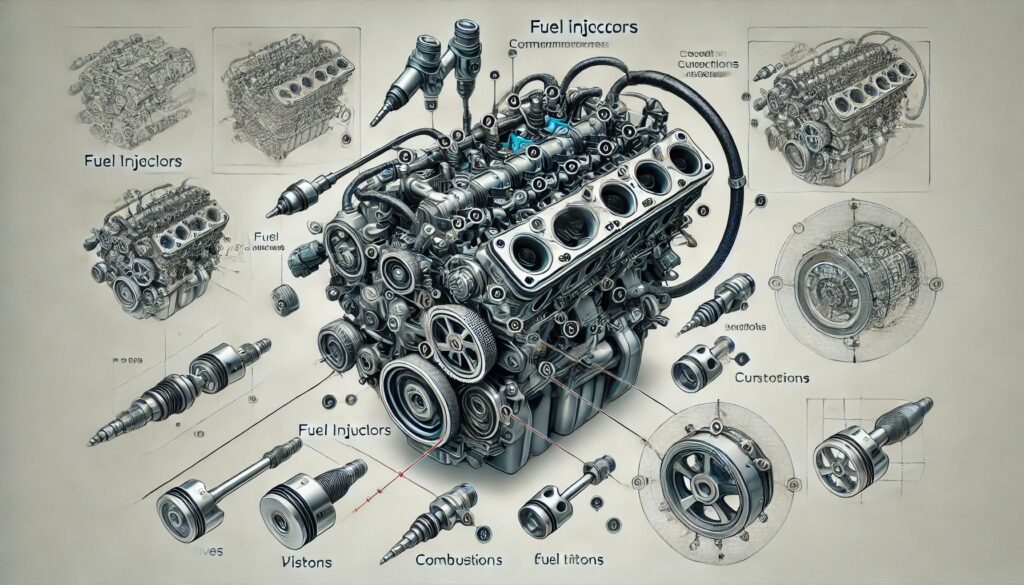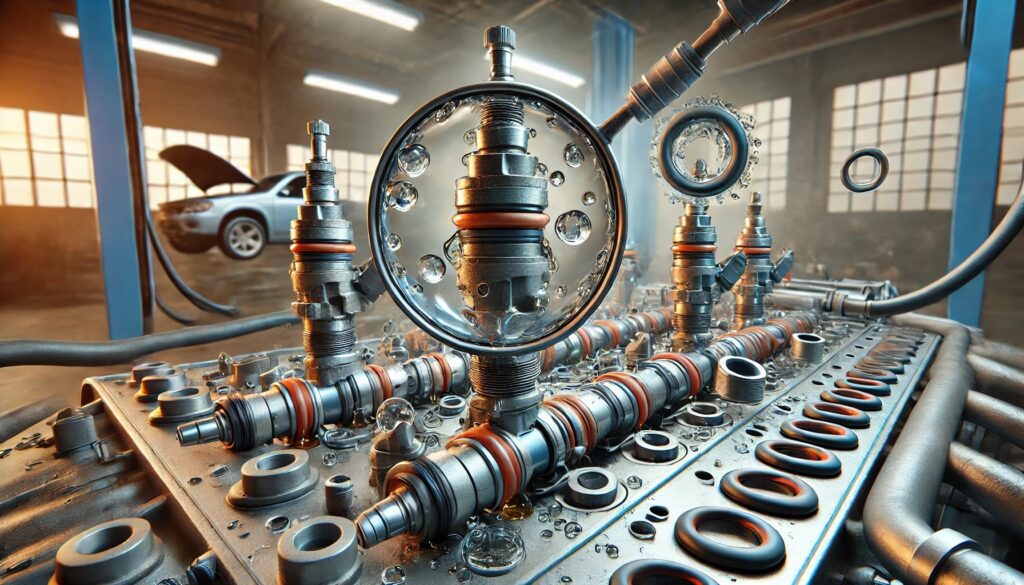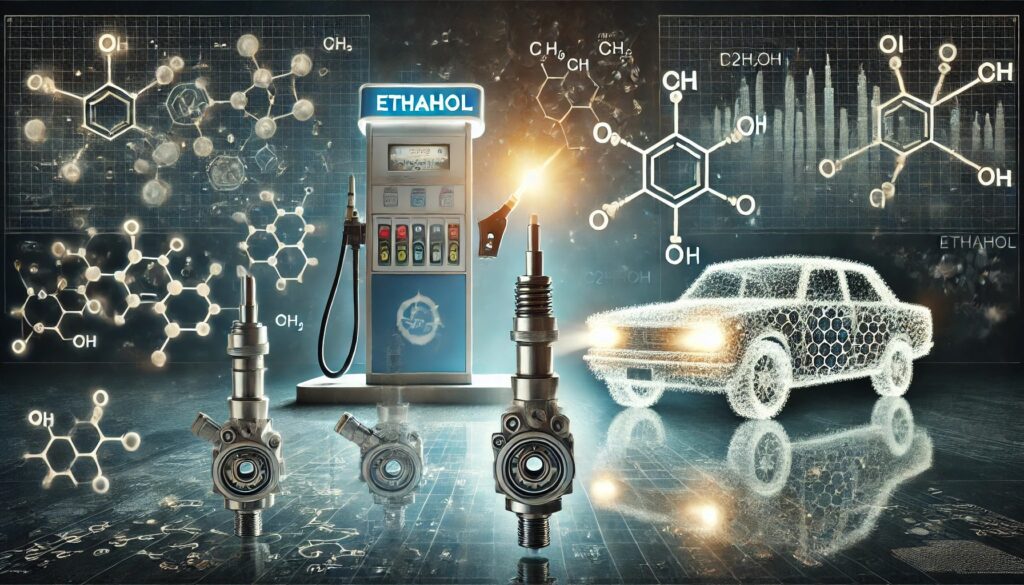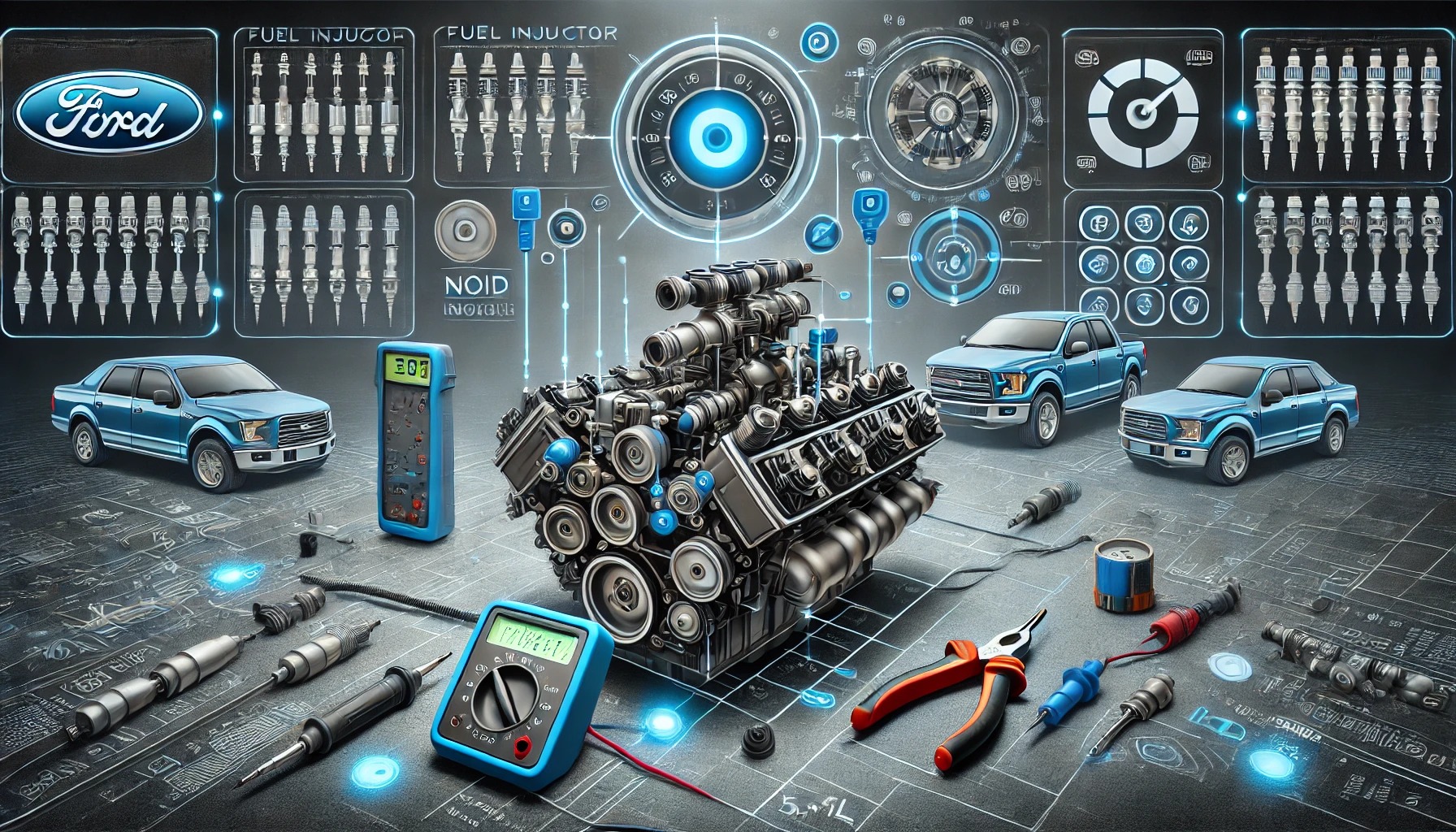From my personal experience, dealing with fuel injector issues in a 5.4L Ford engine can lead to frustrating symptoms like poor acceleration and rough idling. When injectors begin to fail, misfires and a drop in fuel economy are common signs. Addressing these problems early by testing and replacing faulty injectors can restore engine performance and efficiency.
5.4 Ford injector issues can cause poor fuel economy, engine misfires, and rough idling. Regular maintenance and timely replacement of faulty injectors are essential to ensure optimal engine performance. Addressing injector problems early can prevent more severe engine damage and enhance driving experience.
Stay tuned with us as we dive deeper into common 5.4 Ford injector issues and how they can affect your vehicle’s performance. We’ll cover everything from signs of injector failure to tips on testing and maintaining them for optimal engine health. Don’t miss out on valuable insights to keep your Ford running smoothly!
What Are The Key Diagnostic Codes Related To Injector Problems In The Ford 5.4l Engine?
When diagnosing injector problems in the Ford 5.4L engine, several key diagnostic trouble codes (DTCs) can indicate issues. Here are the most relevant codes related to fuel injectors:
P0200: Injector Circuit Malfunction
This code indicates a general problem with the fuel injector circuit, suggesting that the engine control module (ECM) has detected an issue with one or more injectors.
P0201 to P0208: Injector Circuit Malfunction – Cylinder #1 to Cylinder #8
These codes specify which cylinder’s injector is malfunctioning. For example, P0201 refers to the injector for cylinder #1, while P0202 refers to cylinder #2, and so on up to cylinder #8.
P0171 and P0174: System Too Lean (Bank 1 and Bank 2)
These codes indicate that the engine is running with too much air and not enough fuel, which could be caused by faulty injectors not delivering enough fuel.
P0300 to P0308: Misfire Detected (Random or Specific Cylinder)
These codes indicate that the engine is misfiring, which can be related to injector issues if the injectors are not supplying fuel properly.
P0430: Catalyst System Efficiency Below Threshold (Bank 2)
While this code primarily points to catalytic converter efficiency issues, it may also suggest that faulty injectors are contributing to poor combustion and emissions.
Understanding These Codes
- What They Mean: Each code helps identify where the problem lies—whether it’s a specific injector, a circuit issue, or a broader fuel delivery problem.
- Next Steps: If you encounter these codes, it’s advisable to perform further diagnostics on the affected injectors and associated wiring. Testing methods include checking for power at the injectors, measuring resistance, and inspecting for any physical damage or clogs.
Can Bad Fuel Injectors Affect Other Engine Components?

Yes, bad fuel injectors can affect other engine components, and here’s how it works in simple terms:
Engine Misfires:
When a fuel injector is not working properly, it can cause the engine to misfire. This means that one or more cylinders are not getting the right amount of fuel to ignite properly. Misfires can lead to rough idling and a loss of power, which puts extra strain on the engine.
Poor Fuel Combustion:
If the injector is clogged or leaking, it may not deliver fuel correctly. This can result in incomplete combustion, meaning that not all the fuel is burned efficiently. Incomplete combustion can create excess heat and pressure, which can damage engine components like pistons and cylinder walls.
Increased Wear and Tear:
A faulty injector can lead to poor lubrication within the engine. Proper fuel delivery helps lubricate engine parts, and if this is disrupted, it can cause increased wear on bearings and other moving parts.
Overheating:
If the injector fails to supply enough fuel, the engine may run hotter than normal. Overheating can cause severe damage to various components, including the head gasket and engine block.
Exhaust System Damage:
Bad injectors can lead to excessive unburned fuel entering the exhaust system. This can damage the catalytic converter over time, which is an expensive part to replace.
Reduced Fuel Efficiency:
When injectors are not functioning correctly, you may notice a drop in fuel efficiency. This means you’re using more fuel for the same amount of driving, which not only costs more but also puts additional stress on the engine.
Are There Specific Ford Models With More Frequent Injector Problems?
Yes, some Ford models with the 5.4L engine are more likely to have fuel injector issues. These include:
- 2004-2008 Ford F-150
- 2005-2010 Ford Expedition and Lincoln Navigator
These models might have more injector problems because of things like carbon build-up, lower fuel quality, or how the engine is designed. If you own one of these vehicles, it’s a good idea to watch for signs of injector trouble, like misfires or poor fuel economy, and keep up with regular maintenance.
Can I Test Fuel Injectors Without Removing Them From The Engine?
Yes, you can test fuel injectors without taking them out of the engine by doing these simple checks:
Noid Light Test:
Use a noid light to check if the injectors are getting power. Plug it into the injector connector and crank the engine. If it flashes, the injector is receiving power.
Fuel Pressure Test:
Attach a fuel pressure gauge to the fuel system to check if the pressure is within the proper range. Low pressure might mean the injectors are clogged.
Resistance Test:
Use a multimeter to measure the electrical resistance of each injector. The reading should be between 10 and 18 ohms. If it’s too high or too low, the injector might be faulty.
What Are The Signs That Injector Seals Or O-Rings Are Failing?

Injector seals and O-rings keep the fuel injectors sealed tightly to prevent fuel and air leaks. When they fail, you might notice:
- Strong Fuel Smell:
If the seals or O-rings are leaking, you might smell fuel around the engine area.
- Visible Fuel Leaks:
You may see fuel pooling or dripping around the base of the injectors.
- Rough Idling or Misfires:
Leaking seals can let air into the system, which throws off the air-fuel mixture and causes the engine to misfire or run rough. - Check Engine Light (CEL):
The CEL might come on, with codes related to fuel or air leaks (like P0171/P0174, indicating a lean condition). - Poor Fuel Efficiency:
A leak can waste fuel, leading to reduced gas mileage.
If you notice these signs, it’s a good idea to inspect the injector seals or O-rings and replace them if necessary. Replacing these parts is usually straightforward and much cheaper than ignoring the problem, which could lead to bigger engine issues.
How Do I Differentiate Injector Issues From Coil Pack Or Spark Plug Problems?
Differentiating between fuel injector issues and problems with coil packs or spark plugs can be tricky, but there are some simple ways to tell them apart. Here’s how you can do it:
Signs of Fuel Injector Issues
- Engine Misfires: If the engine misfires mostly when idling or during light acceleration, it might be an injector problem. Bad injectors can cause uneven fuel delivery, leading to rough running.
- Rough Idle: A pronounced roughness when the engine is running in “Park” compared to “Drive” often suggests a problem with the injectors. This is because the fuel demand is lower at idle, making injector issues more noticeable.
- Fuel Smell: If you smell gasoline around the engine, it could mean that an injector is leaking fuel.
- Poor Fuel Economy: If you notice a sudden drop in fuel efficiency, it might be due to clogged or malfunctioning injectors that are not delivering fuel properly.
Signs of Coil Pack or Spark Plug Issues
- Engine Misfires Under Load: If you experience misfires primarily when accelerating or under heavy load (like going uphill), it’s more likely a coil pack or spark plug issue. Bad coils often fail when they need to deliver more power.
- Check Engine Light Codes: When you read the trouble codes, misfire codes (like P0300 to P0308) can indicate which cylinder is misfiring. If a specific cylinder is misfiring repeatedly, it might point to a faulty coil or spark plug for that cylinder.
- Intermittent Misfires: Coil pack problems can lead to intermittent misfires that come and go, especially if the engine is hot. If the misfire changes when you swap coils around, that’s a strong indicator of a bad coil.
- Visual Inspection: Look for signs of wear on spark plugs or cracks in the coil packs. Damaged components can lead to poor performance.
Are There Preventive Maintenance Tips Specifically For High-Mileage 5.4l Engines?
Yes, keeping your high-mileage 5.4L engine in good shape involves regular maintenance. Here are some simple tips:
- Clean the Fuel Injectors: Use a fuel injector cleaner every 30,000 miles to prevent clogging and keep them working properly.
- Replace the Fuel Filter: Change the fuel filter every 15,000-20,000 miles to keep dirt and debris from reaching the injectors.
- Use High-Quality Fuel: Fill up with good-quality gasoline to avoid deposits and carbon build-up in the engine. Occasionally use premium fuel or fuel with cleaning additives.
- Regular Oil Changes: Stick to the recommended oil change schedule to keep the engine clean and lubricated. This prevents wear on parts like injectors and valves.
- Inspect and Replace Spark Plugs and Coils: Check spark plugs and ignition coils regularly. Replacing them when needed helps prevent misfires that can strain the engine.
- Check Engine Codes Promptly: If the Check Engine Light comes on, don’t ignore it. Diagnose and fix issues quickly to avoid bigger problems.
- Keep the Intake System Clean: Clean the throttle body and intake manifold periodically to reduce carbon deposits that could affect performance.
By following these steps, you can extend the life of your 5.4L engine and avoid costly repairs.
Are There Warranty Extensions For Ford 5.4l Fuel Injector Issues?
Yes, Ford has provided warranty extensions for certain 5.4L engine models experiencing fuel injector issues, particularly for vehicles where injectors may become stuck in either the open or closed position. These extended warranties cover affected models for up to 11 years or 120,000 miles, depending on the specific model year. This means that if you have an eligible vehicle, Ford will repair or replace faulty injectors at no cost to you, provided the issue falls under the warranty guidelines. If you suspect your vehicle might be affected, it’s a good idea to contact a Ford dealer with your Vehicle Identification Number (VIN) to determine if your car qualifies for the extended coverage, potentially saving you on costly repairs.
How Long Do Oem Ford 5.4l Injectors Typically Last?
OEM (Original Equipment Manufacturer) fuel injectors for a Ford 5.4L engine are designed to last a long time, but they don’t last forever. On average, they can last between 100,000 to 150,000 miles if well maintained.
However, their lifespan can be affected by factors like:
- The quality of the fuel you use
- How well the vehicle is maintained
- Driving conditions (e.g., frequent short trips or heavy towing can shorten their life)
To make sure your injectors last as long as possible, it’s important to follow regular maintenance, such as using good-quality fuel and cleaning the injectors periodically. If your injectors start failing before reaching this mileage, it could be due to clogging, wear, or other issues.
How Does Ethanol-Blended Fuel Impact The Longevity Of Injectors?

Ethanol-blended fuel can impact the longevity of fuel injectors in several ways. Here’s a simple explanation of how this happens:
Absorbs Water:
Ethanol is hygroscopic, meaning it attracts and absorbs moisture from the air. When water mixes with ethanol in the fuel tank, it can lead to a problem called phase separation. This is when the ethanol and water separate from the gasoline, causing a layer of water to settle at the bottom of the tank. If this contaminated fuel is used, it can cause significant damage to fuel injectors.
Clogging and Deposits:
Ethanol can cause deposits to form inside the fuel injectors. These deposits can clog the injectors, making it harder for them to deliver fuel properly. If injectors are clogged, it can lead to poor engine performance and increased wear on other engine components.
Dissolving Old Parts:
In older engines, ethanol can dissolve rubber and plastic parts that were not designed to handle it. This can lead to debris entering the fuel system and causing further clogging or damage to the injectors.
Increased Wear:
The presence of ethanol can also increase wear on injectors over time. This is because ethanol is a solvent that can pick up dirt and sludge from the fuel system, which may then pass through the injectors and cause additional wear.
Fuel Quality:
Using poor-quality ethanol-blended fuel (like E10 or E15 that has undergone phase separation) can exacerbate these issues. It’s important to use high-quality fuel that contains detergents to help keep injectors clean.
FAQs
1. What are the common signs that my Ford 5.4L injectors need cleaning?
Symptoms include poor fuel economy, rough idle, engine misfires, and hesitation during acceleration. If you notice these issues, it’s a good idea to clean the injectors or perform a diagnostic test to check for clogging.
2. Can fuel injector problems lead to a check engine light (CEL) in my Ford 5.4L engine?
Yes, fuel injector problems can trigger a CEL, especially with codes like P0171/P0174 (lean condition) or P030x (misfire). These codes point to potential injector malfunctions, signaling the need for further investigation.
3. What maintenance should I do if I frequently use ethanol-blended fuel in my 5.4L engine?
If you’re using ethanol-blended fuel regularly, consider cleaning your injectors more often, using fuel additives to combat ethanol-related issues like corrosion, and replacing the fuel filter to reduce clogging risks.
4. What tools do I need to test Ford 5.4L injectors without removing them?
To test injectors without removal, you’ll need a Noid Light to check electrical signals, a fuel pressure gauge to verify fuel system pressure, and a multimeter to measure injector resistance.
5. How can I tell if my Ford 5.4L injectors are contributing to engine misfires?
Misfires caused by faulty injectors may trigger misfire codes (P030x) and irregular spray patterns. If the injectors are not spraying fuel evenly, or if the resistance is out of range, they could be causing the misfire.
Conclusion
Fuel injectors in the Ford 5.4L engine are vital for performance, and issues like clogging, electrical problems, or wear can cause poor fuel economy, misfires, or stalling. Regular maintenance, such as using high-quality fuel and cleaning injectors, can extend their life. Testing injectors with a noid light or multimeter helps diagnose issues without removing them. If problems persist, replacing all injectors is recommended for high-mileage vehicles. Some Ford models have extended warranties for injector problems, so check with your dealer if you’re facing issues.
